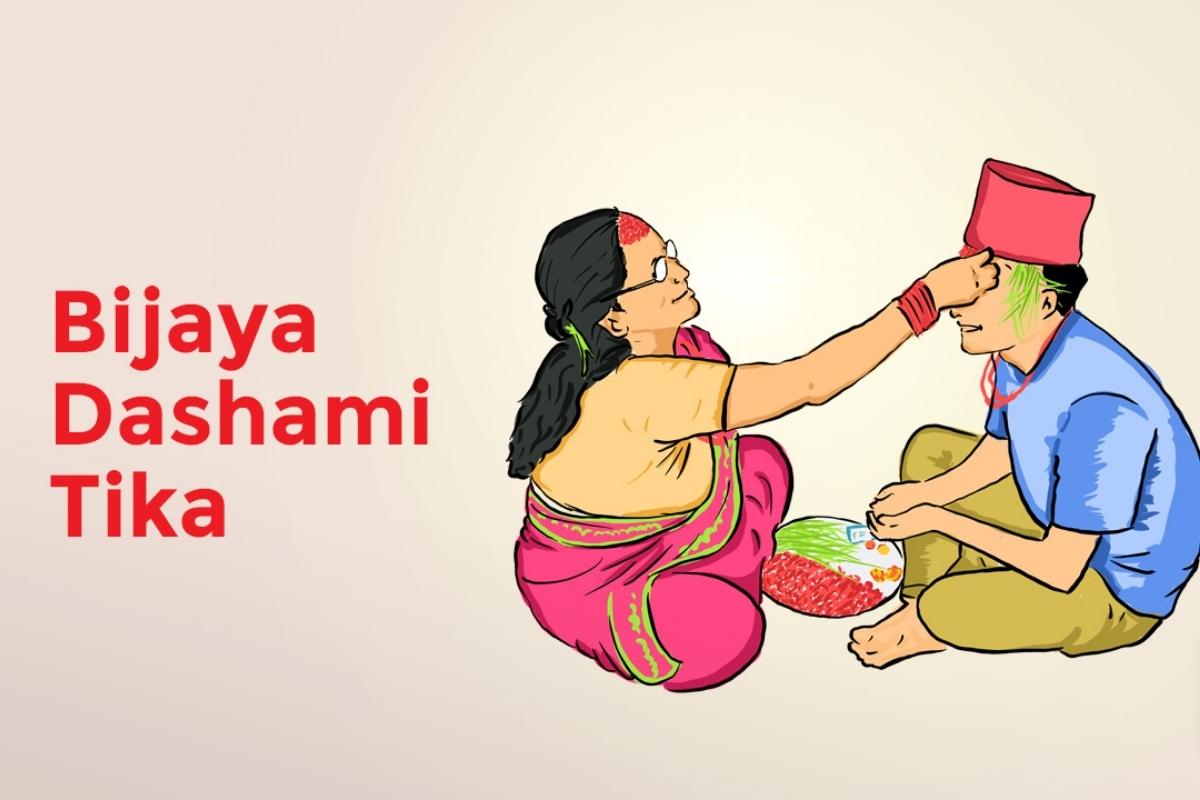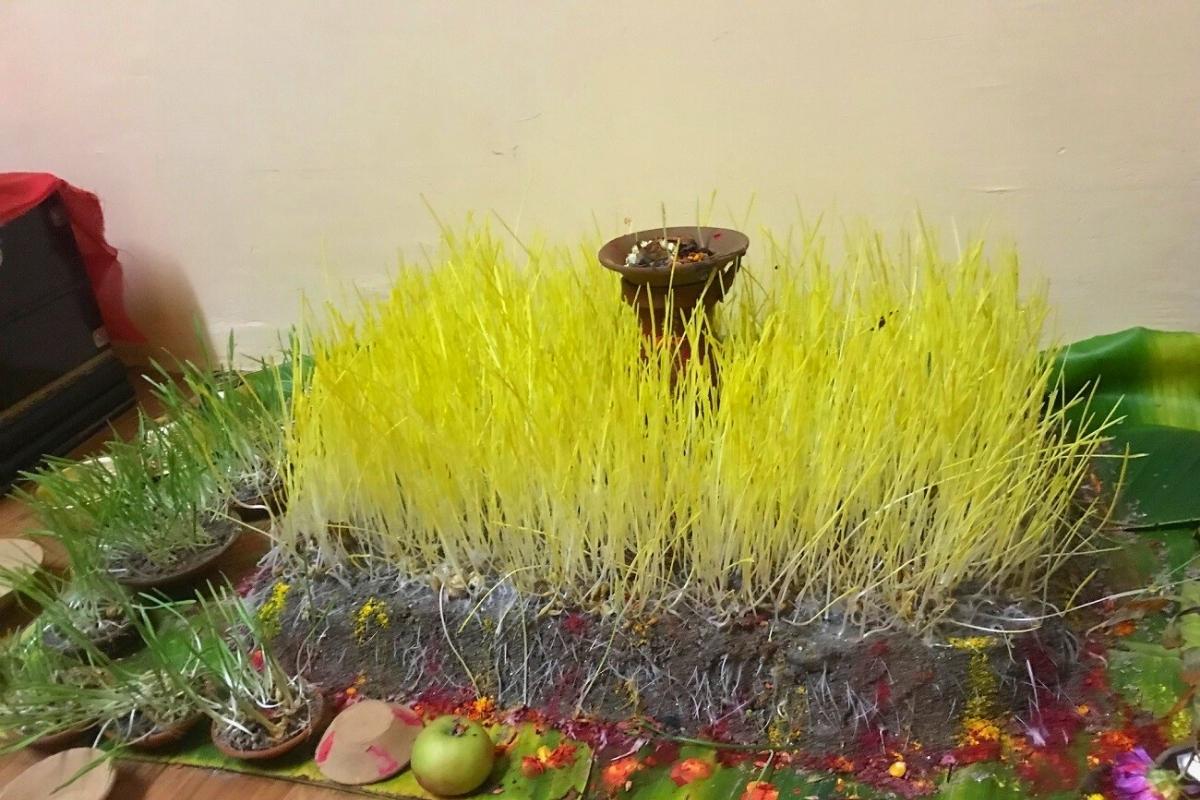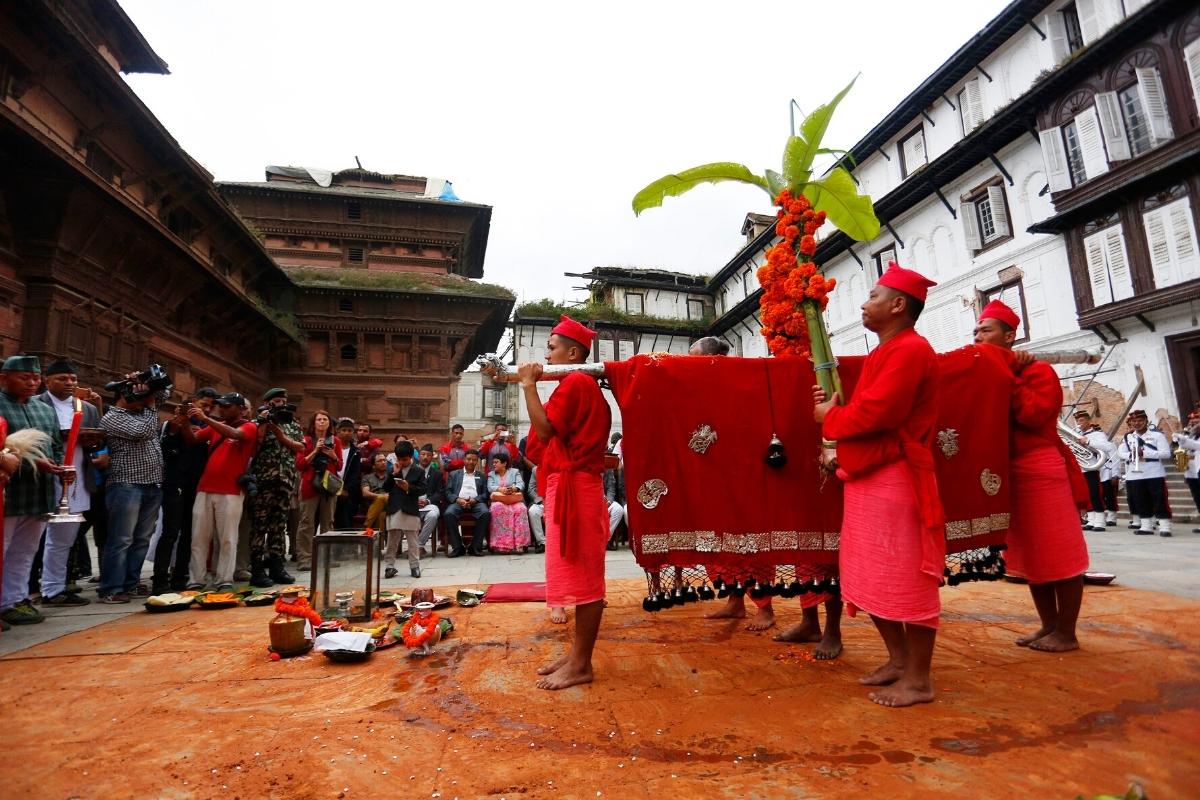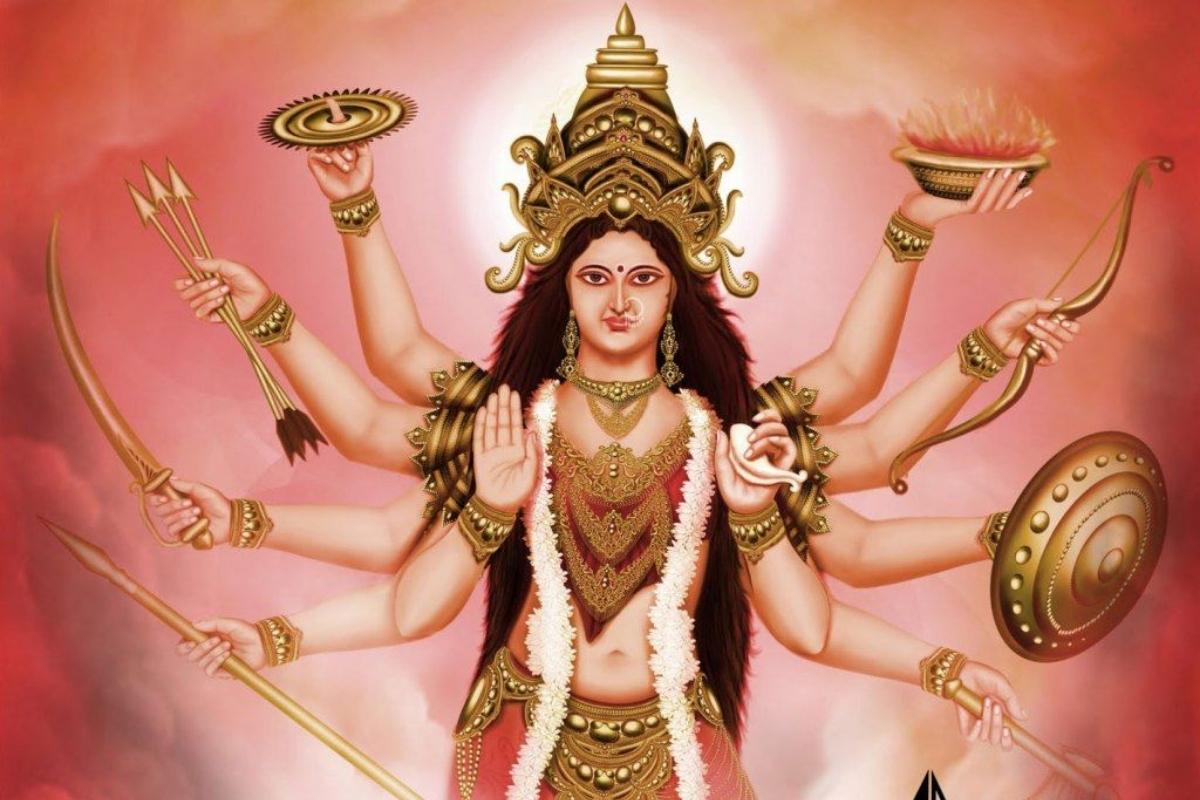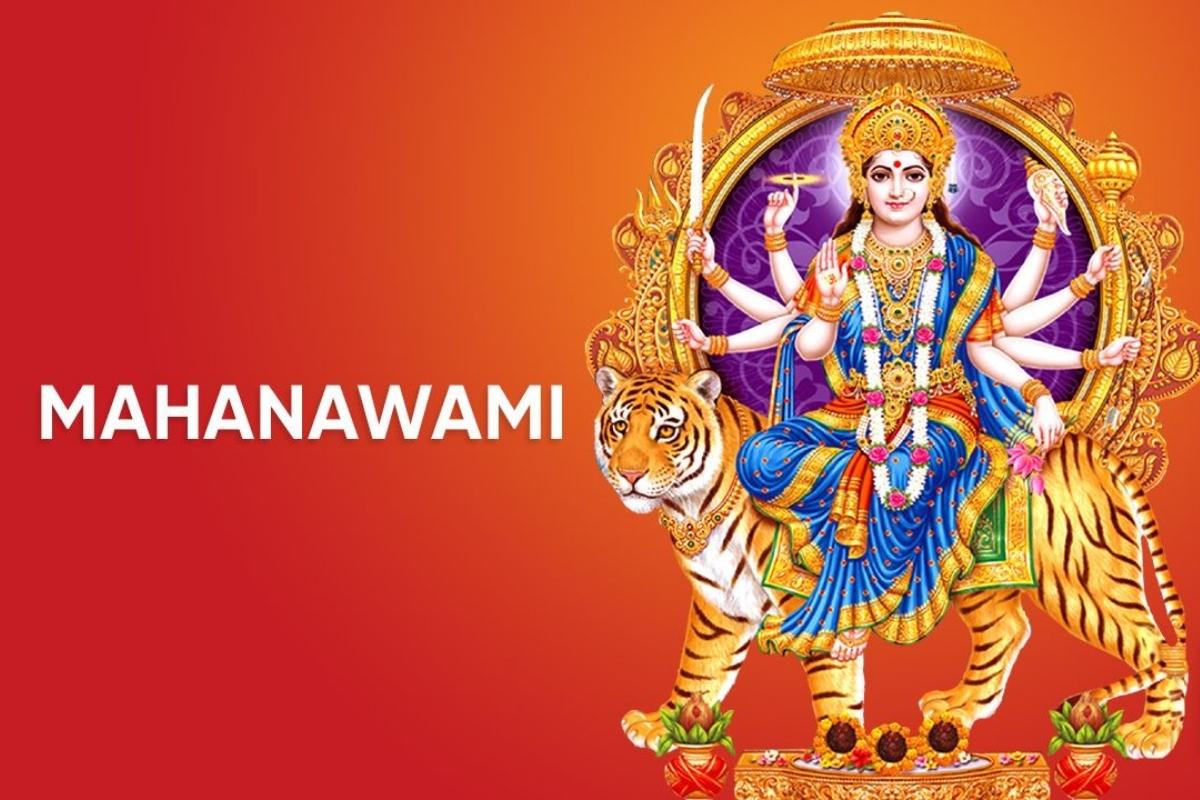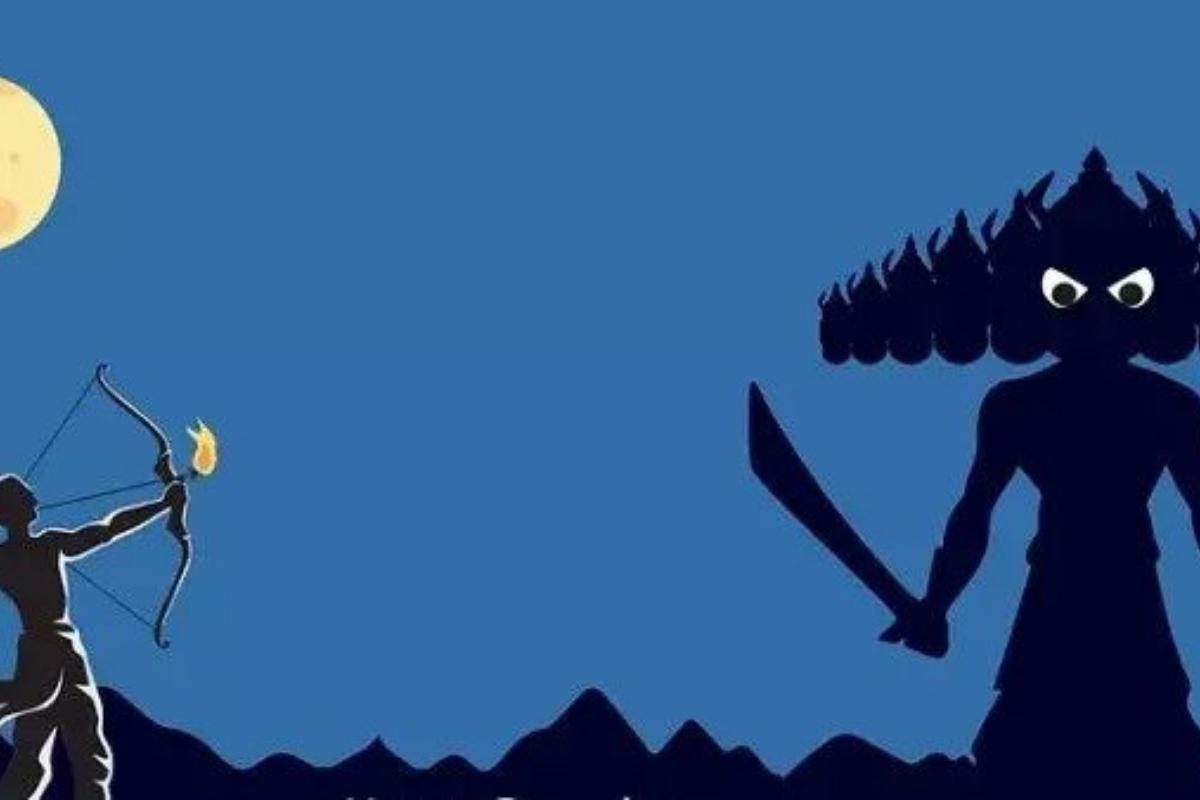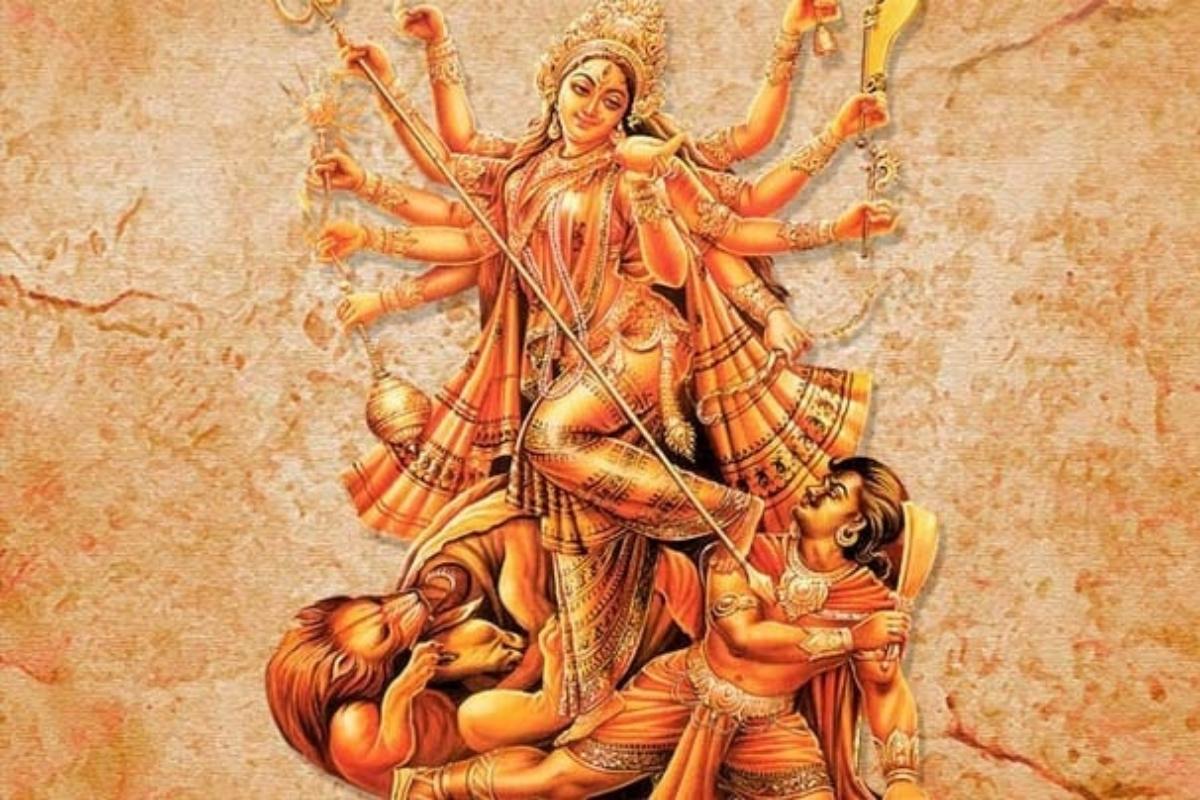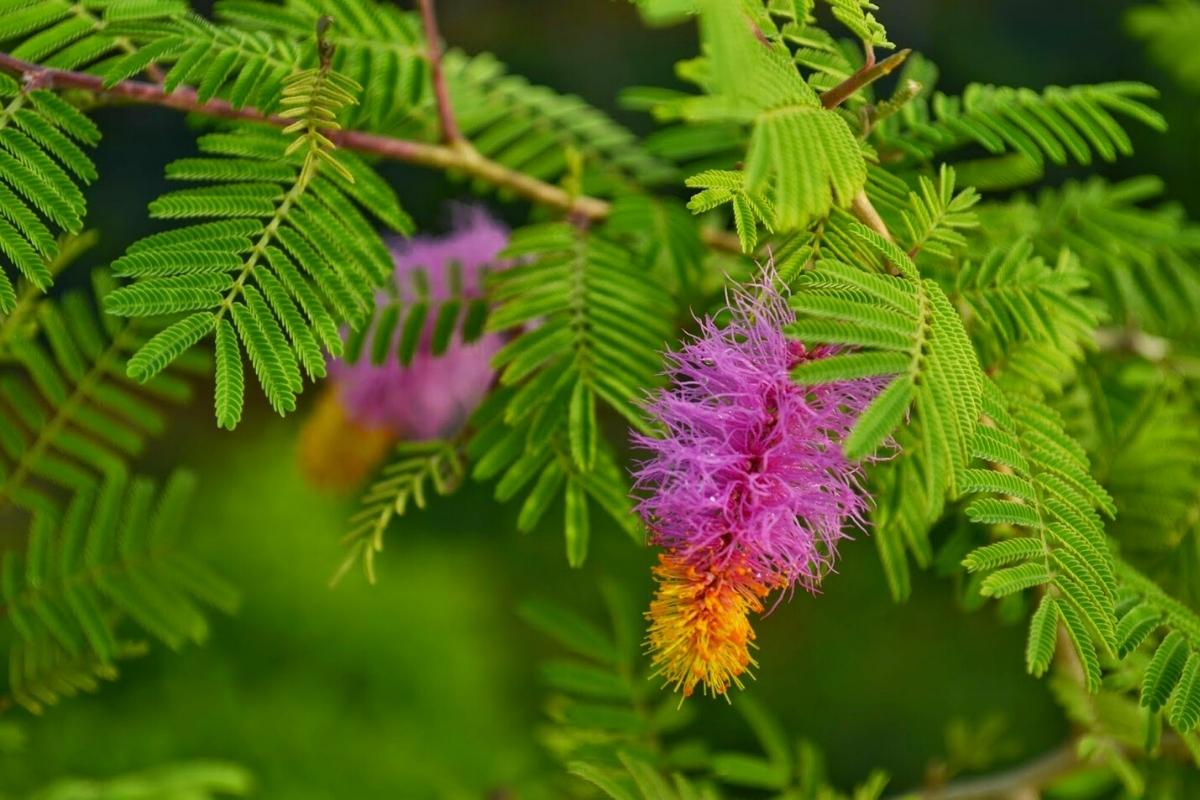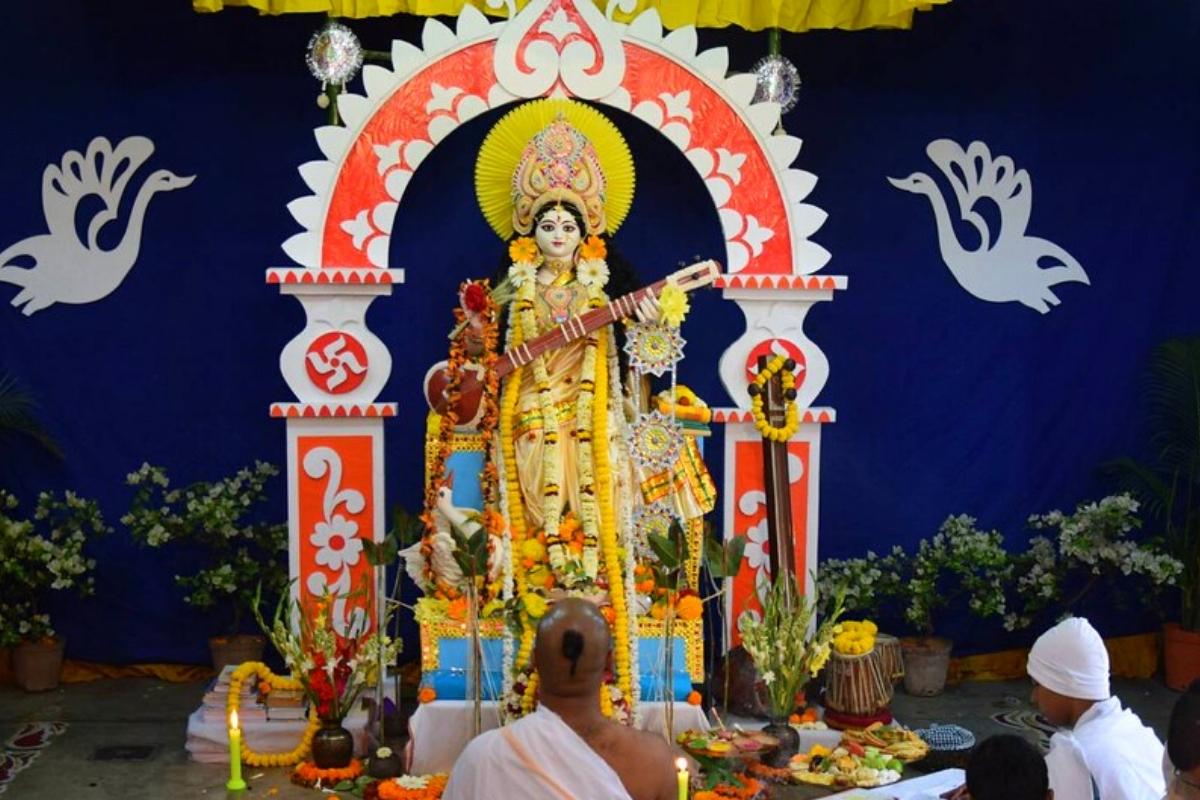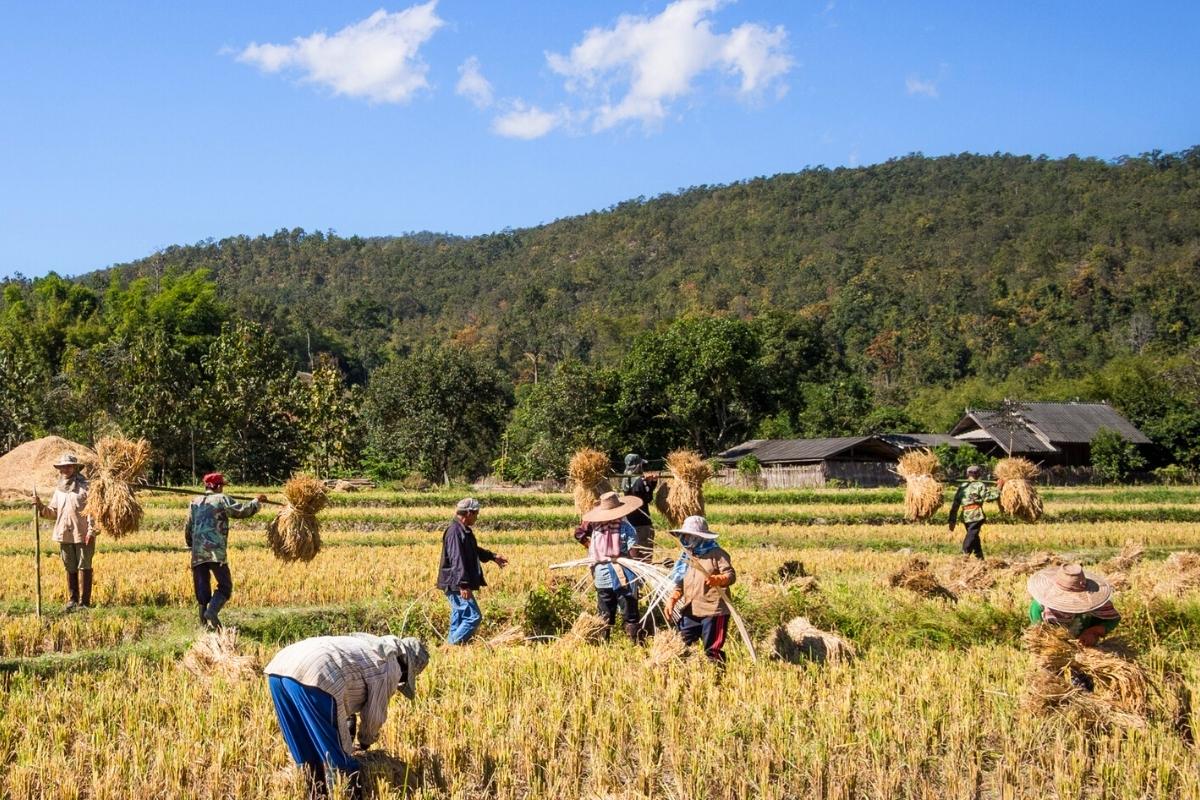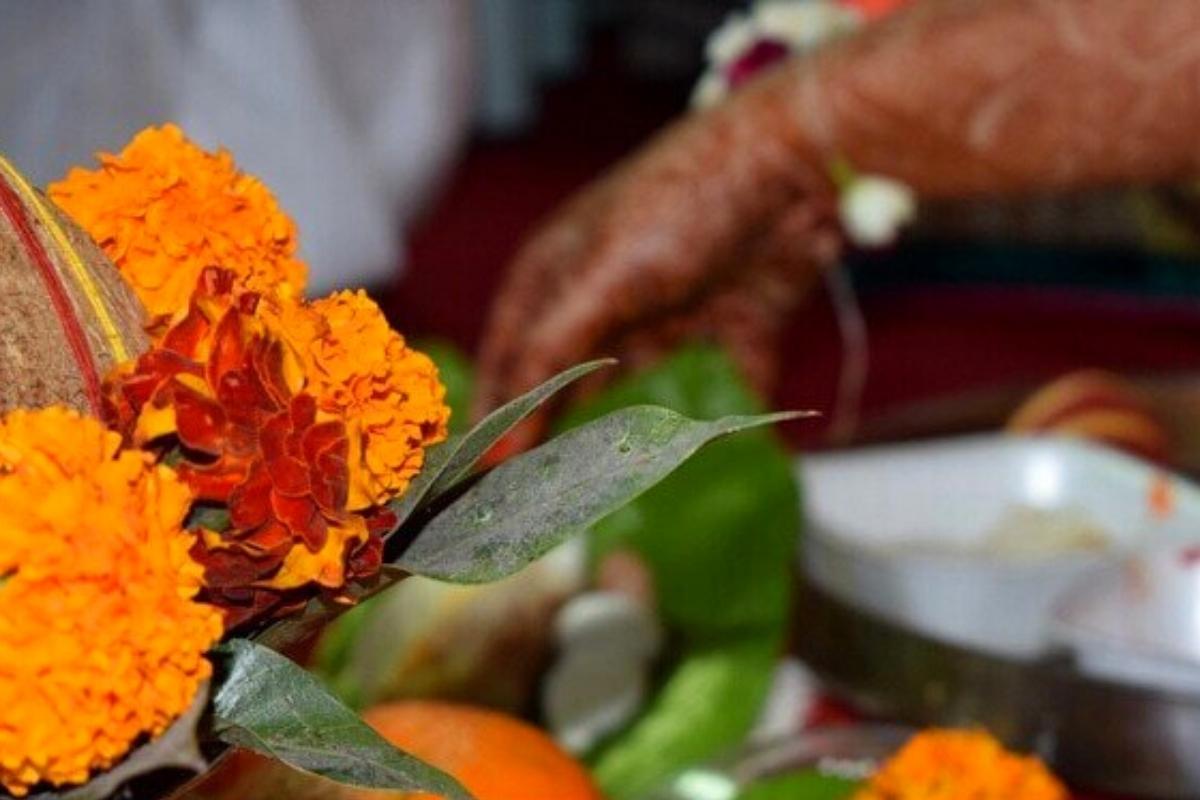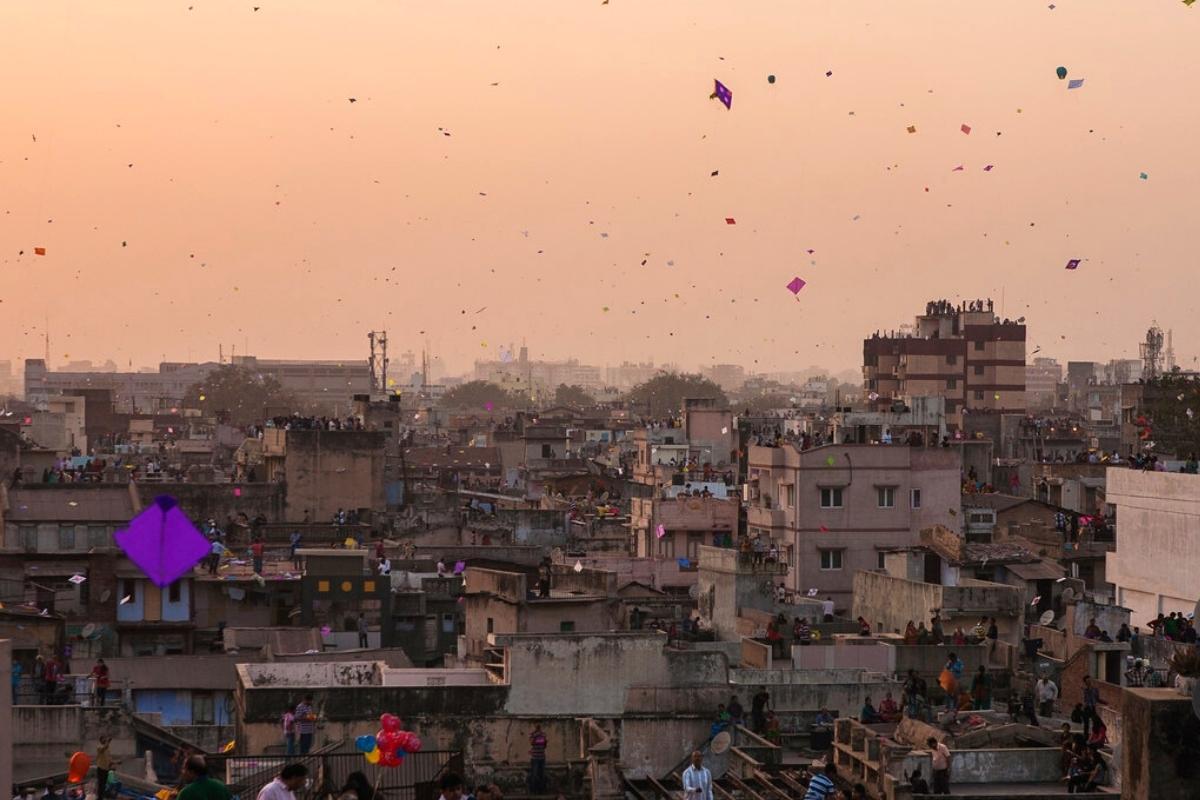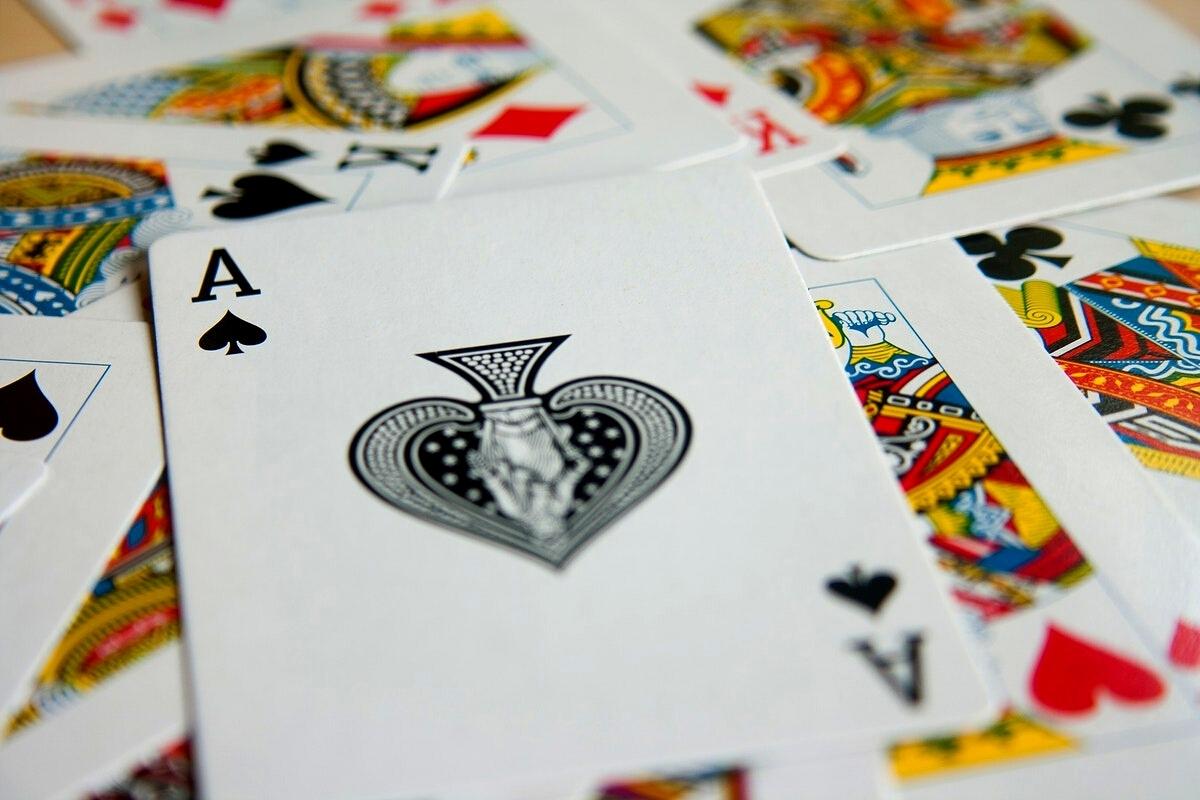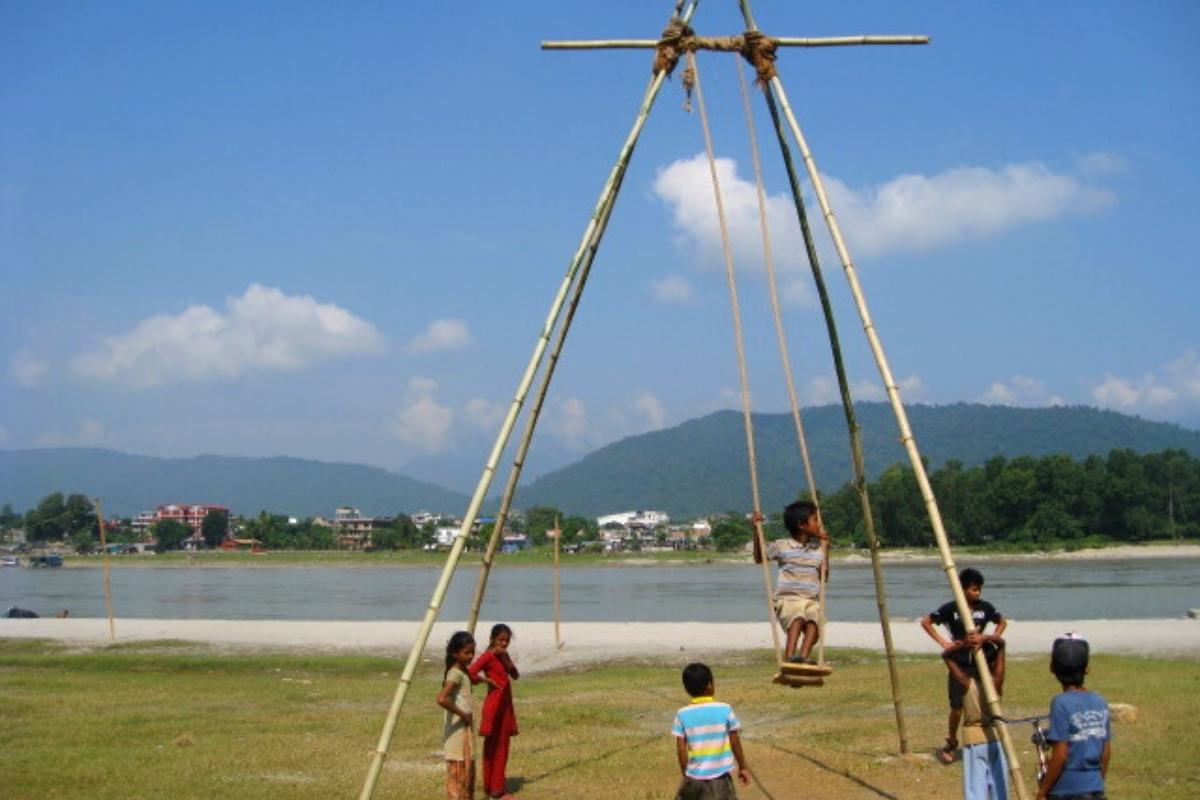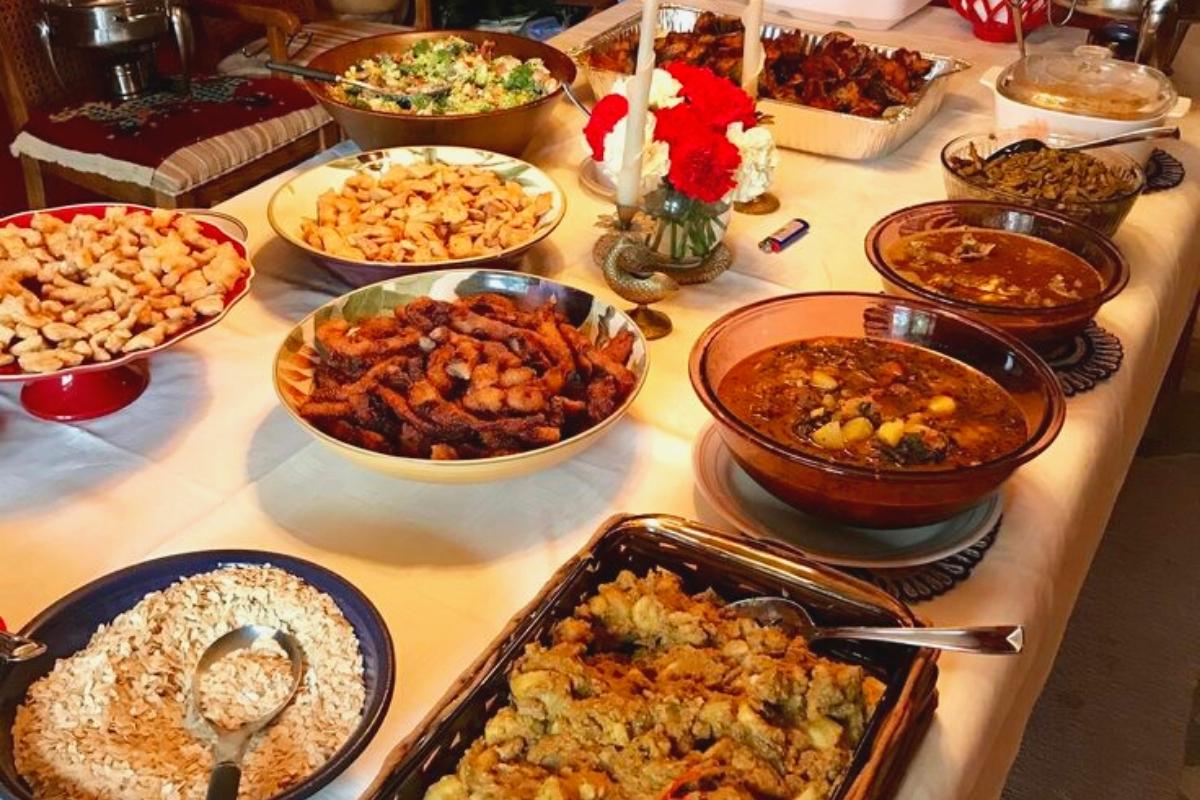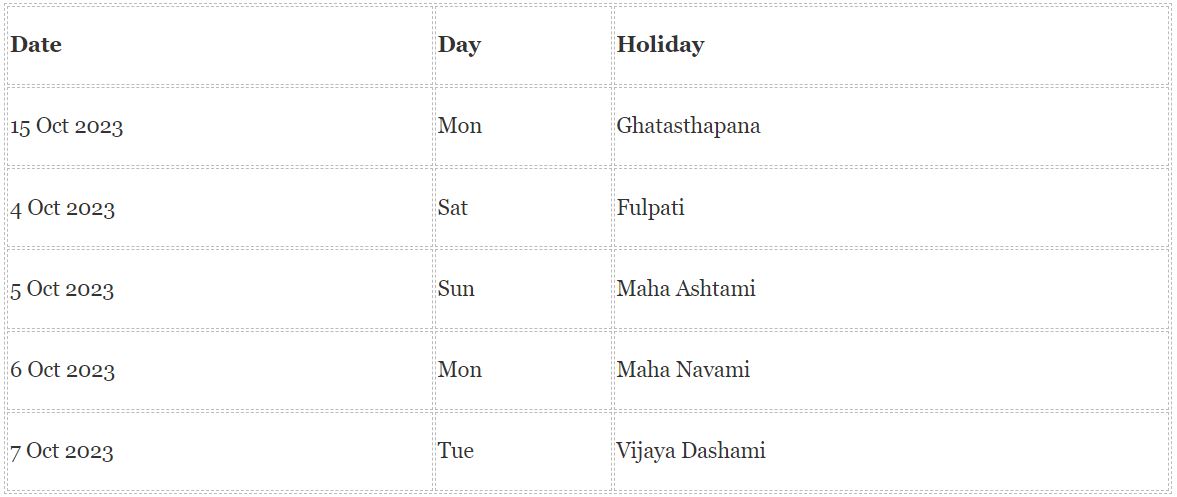If you ever wonder what the Tihar festival is, The Tihar festival in Nepal is a five-day festival observed in Nepal following Dashain. Another name for Tihar is Deepawali, which means “row of lights.” Along with Nepal, the festival is also celebrated in India, Sri Lanka, and Bangladesh, with regional differences. Carrying their own unique specialty, all regions follow one thing in common: the festival of lights.
Tihar honors Goddess Laxmi, the goddess of wealth. The Festival of Lights is often characterized by the lighting of diyas both within and outside of homes to enlighten them at night.
The five-day celebration is of immense importance since it displays respect not just for God and humanity but also for the animals that have close relationships with people, such as cows, dogs, and crows.
Celebration of Tihar Festival, The Festival of Lights
The origin of this event is rooted in the Ramayana, an epic tale of Lord Rama’s conflict with the demon Ravana, in which Laxmi appears.
In mythology, Lord Ram marries Sita, who is said to represent the goddess Laxmi in human form. People lit candles to light their way in the darkness as Lord Ram joyously returned to his land after defeating Ravan. People burn lamps in their houses on the Laxmi Pooja of Tihar to worship Lakshmi in the hope that she will bring prosperity to their residences for the upcoming year.
Celebration may contribute to the evolution of consciousness in the presence of prevailing ignorance. We celebrate Tihar in honor of the victory of great awareness over ignorance or divided awareness—a victory of Ram over a demon called Ravana.
There are four days of national holidays celebrating the Tihar festival in Nepal. All governmental organizations, educational institutions, and other public sectors will be shut down throughout the holiday.
5 Days of Tihar Festival in Nepal
Following Dashain, Nepal celebrates the five-day Hindu festival of Tihar. Here, the people describe the Tihar festival of Nepal as being very significant because it demonstrates respect for all living things, including the animals that have close bonds with people in addition to the gods and humans. Every Hindu ethnic group in Nepal observes this festival in a unique way. It is the festival of lights for the vast majority of Hindus.
Tihar by worshiping the Hindu goddess Laxmi and other avatars of gods for five days. Tihar in general signifies the festival of lights, where diyos are lit both inside and outside the houses to make them illuminate at night.
The demon of death, Yama had been separated from his sister, Yamuna for a very long period of time. The Yamuna urged her brother to come to see her in a number of ways since she was so excited to meet him. She supposedly encountered a crow, a dog, a cow, and eventually her brother Yama. After seeing her brother, she honored him by placing a vivid Tika on his forehead along with flowers and Tika. This process of Tihar has been followed till now.
Day 1: Worshipping Crows (Kaag Tihar)
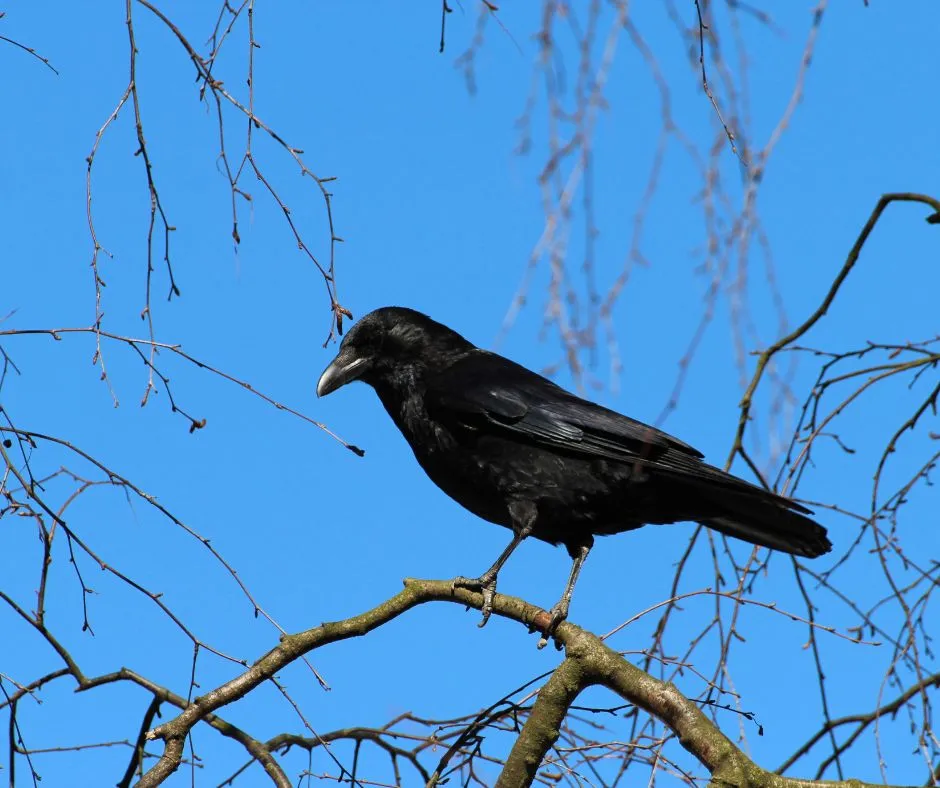
Tihar starts with the day of worshipping the crows. Crows, or Kaag, are revered at the Crow Festival as Yamaraj’s messengers and as a “messenger of death.” It is traditional to honor the crow and provide food on the day of the crow celebration. In Nepali culture, crows are regarded as messenger animals. Devotees believe that by feeding the crows, they can placate them and prevent tragedy and death in the upcoming year.
Day 2: Worshipping Dogs (Kukur Tihar)
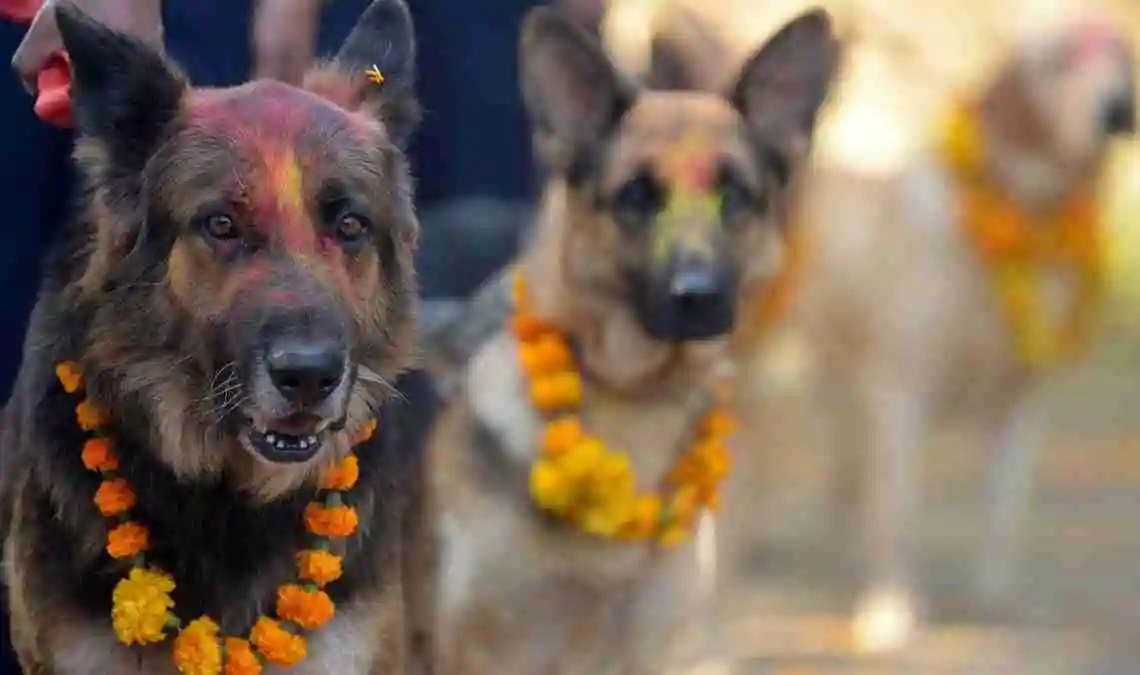
The Newars refer to the second day as Khicha Puja or Kukur (dog) Tihar. To appease the death god Yama, people worship dogs on this day. Tika and flower garlands are worn around the necks of dogs.
According to the Mahabharata, Lord Shiva’s ferocious manifestation, Bhairava rode a dog. Yama, the god of death, is reputed to have two four-eyed guard dogs. According to legend, dogs guard the entrances to Naraka, the Hindu notion of hell.
Worshipers present them with a variety of foods, including dog food, eggs, and many more. Anyone who treats a dog disrespectfully is guilty of sin. This day is also recognized as Naraka Chaturdashi as a result of this belief.
Day 3: Worshipping Cows & Goddess Laxmi (Gai Tihar & Laxmi Puja)
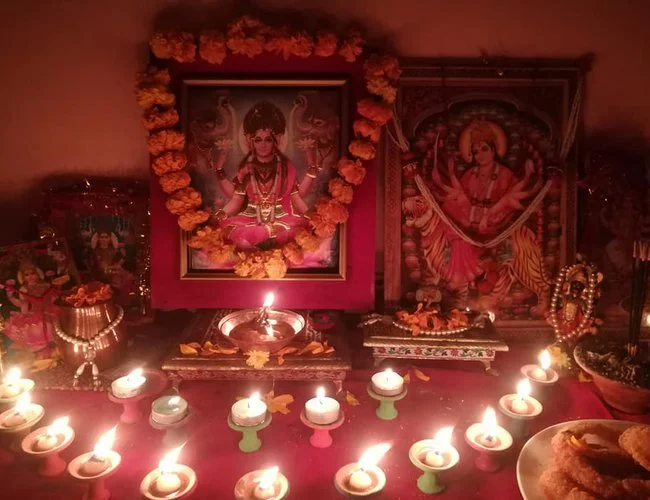
The third day’s morning is dedicated to cow worship. Hinduism places a special emphasis on the cow, which is revered as a sacred animal. Hindus hold the cow in high regard as a particularly domesticated animal that gives far more than it receives.
The third day of the Tihar festival in Nepal is also regarded as its most significant day. The festival’s patron goddess, Lakshmi, is honored in residences. People welcome Laxmi by opening their doors and windows in the evening and blowing candles and Diya lights. On the evening of Laxmi Puja, people think that Laxmi wanders the earth. In the evening, a special puja is performed for Lakshmi in order to invoke wealth, prosperity, and good health.
From this day onward, individuals gather in groups in a specific location and begin to play Deusi and Bhailo. They have a variety of musical instruments, including a madal, flute, guitar, drum set, and more. All ethnicities participate in singing and dancing as they visit different houses in their neighborhood. As a gift for prosperity, joy, and wealth, those house owners will give them cash, Sel roti, and sweets.
Day 4: Worshipping Oxen & Self (Goru Tihar & Mha Puja)
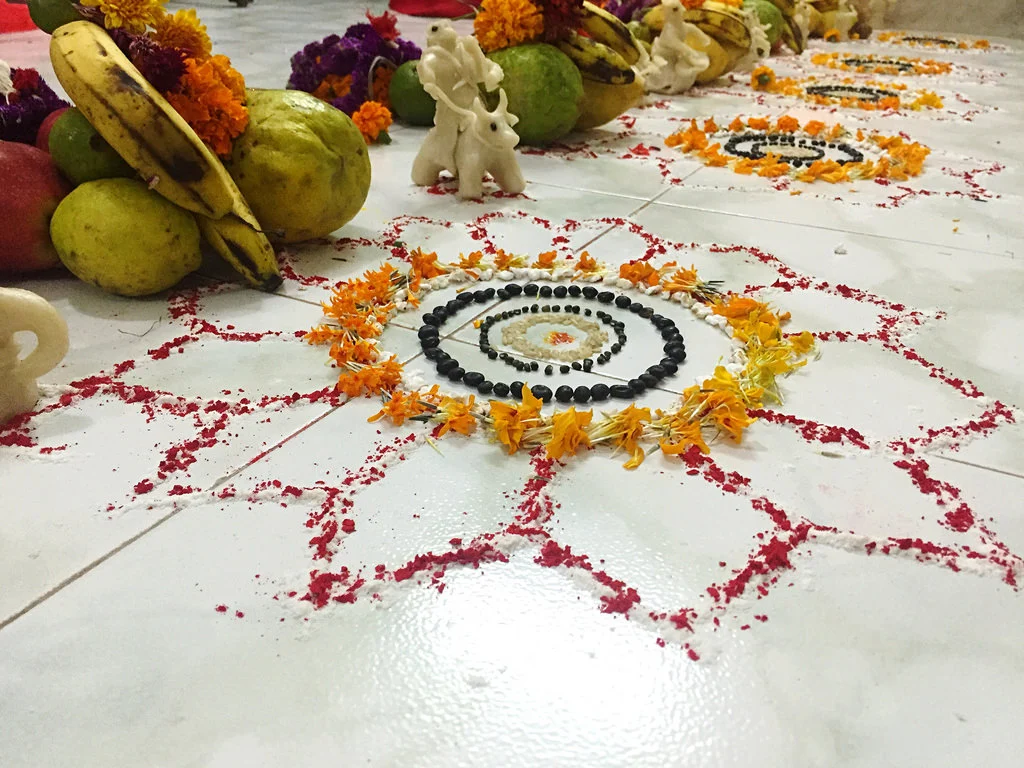
On the fourth day of Tihar, known as Goru Puja, the ox is revered and honored. The ox is worshipped because it provides manual labor, which is crucial for an agricultural nation like Nepal.
Every home worships an idol of the Govardhan mountains made out of cow dung. Cow dung was used to create the Govardhan mountains, which were then decorated with lovely flowers and colors. Worship should be offered today in support of more cows, their breeders, and prosperity.
The Newari tradition today also reveres the inner self as a divine component. This is also referred to as Mha Puja, where Mha stands for oneself and Puja stands for worship. For the Newari people, the new year began today as well.
Day 5: Worshipping Brothers & Sisters (Bhai Tika)
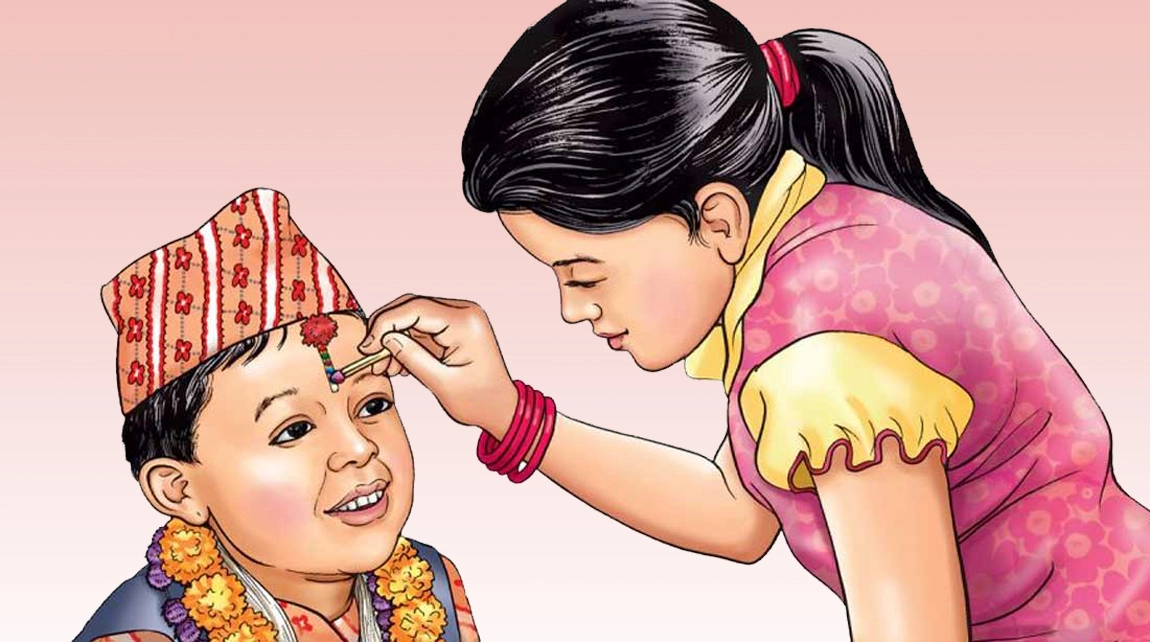
The final day of Tihar, or Bhai Tika, is today. Sisters apply “tika” to their brother’s forehead, which is how the phrase “Bhai tika” is literally translated. This particular day demonstrates the bonds between the sister and brother.
The sisters also provide garlands of marigolds, sweets, dry fruits, and special dishes for them in addition to the seven different colors of tika. According to Hinduism, the sisters’ prayers prevent the brothers’ deaths, as Yamaraj comes for them. This is a result of the sister’s prayer to Yama for her brother’s long life.
Why is Tihar the best time for trekking?
The best months for the trek
Tihar (late October) is the ideal season if you plan to go trekking in Nepal. Mountains and their environment are visible throughout this month, and they are verdant, clear, and simply breathtaking to remember.
The average temperature in the alpine region will be approximately 22 degrees Celsius, and at night it will be about 8 degrees. However, the nighttime temperature might drop below zero degrees in areas with greater altitudes.
Clear Views and Good Weather
The greatest months for traveling and hiking in Nepal are thought to be October and November of the entire year. Since there are no clouds and a moderate temperature throughout this month, tourists may enjoy beautiful skies, bright sunshine, and moderate temperatures.
This month brings clarity, where the monsoons wipe away the bugs and dust. In the lower reaches of the Annapurna Circuit Trek, daytime temperatures average around 15°C, and overnight lows seldom ever go below zero. Naturally, the temperature drops a little as you ascend, particularly at Everest Base Camp.
Perfect Weather for National Park Visit
Every national park in Nepal is best visited in October because it is the perfect transitional period between the sweltering summer and the chilly winter months. You should still pack a sweater or jumper, even though it will be really pleasant.
Early October to late March is the most pleasant time of year with warm weather for visiting national parks. It offers outstanding visibility and wonderful Himalayan views. Other times, smoke and pollution from traffic, industry, and rubbish burning may obscure the view.
The best time to roam around Kathmandu
Due to the vistas of beautiful glaciers and regional celebrations, late September to early December is the ideal time to visit Kathmandu. Tihar is mostly observed throughout the day, often beginning with morning pujas, but on the third day of the festival, in the evening, Kathmandu’s otherwise dark streets are illuminated to welcome the Goddess Lakshmi.
The floors of the homes and businesses are painted with vibrant patterns, most often mandalas, and ornamented with flowers, candles, and food offerings. Above the doorways are marigold garlands.
People come up in the streets that are lit up at night, chatting, performing music, and playing cards. Firecrackers occasionally blow, and youngsters in groups go door-to-door singing and pleading for money and sweets.
The view of Kathmandu will be worth watching in Tihar, observing people enjoying the moments of life.
Tihar Festival Nepal 2023/2024/2025/2026
| Year | Date | Day | Holiday |
2023 | 13 Nov | Mon | Govardhan Puja |
14 Nov | Tue | Laxmi Puja | |
| 15 Nov | Wed | Bhai Tika | |
2024 | 1 Nov | Fri | Laxmi Puja |
2 Nov | Sat | Govardhan Puja | |
| 3 Nov | Sun | Bhai Tika | |
2025 | 20 Oct | Mon | Laxmi Puja |
| 22 Oct | Wed | Govardhan Puja | |
| 23 Oct | Thu | Bhai Tika | |
2026 | 8 Nov | Sun | Laxmi Puja |
| 10 Nov | Tue | Govardhan Puja | |
| 11 Nov | Wed | Bhai Tika |
How to Celebrate Tihar as a Traveler
There is no better time to visit Nepal than during Tihar if you want to witness the clear nature and friendly local people. Because Nepalis are so friendly, they often let people into their homes to eat and celebrate festivals.
There are more ways to celebrate Tihar in Nepal than getting together with a Nepali family. Here is a list of the best:
- Kathmandu will be filled with beautiful lights, religious celebrations, cultural shows, and activities for the holiday. You can go there to buy gifts at the famous Thamel Market and to see religious ceremonies at beautiful temples.
- On Kukur Tihar, go out into the streets and give red powder, marigold flowers, and treats to dogs to thank them for their loyalty.
- Visit the Rani Pokhari Temple, which is open to everyone but only once a year during Bhai Tika. You can walk around the calm lake’s edge and look at the town from a distance.
- For a more local celebration, go to one of the nearby villages. Have fun and learn about how people from different cultures celebrate the same holiday in their own unique ways.
- To have a real and unique party, go on a trip through the Nepal Himalayas and stop in small towns along the way.
Are Tihar and Diwali the same?
Both Diwali and Tihar, which share similar cultural origins, celebrate the victory of virtue over evil with clay lamps, lights, and sweets. The dates are the same: the Hindu calendar’s eighth month’s new moon night. On the main day of the event, both nations also honor Goddess Lakshmi, the goddess of riches. The five-day celebrations, however, varied greatly from one another.
The primary distinction is that Tihar is a celebration of animals and expresses gratitude for their assistance in human lives, whereas Diwali is primarily concerned with the gods.
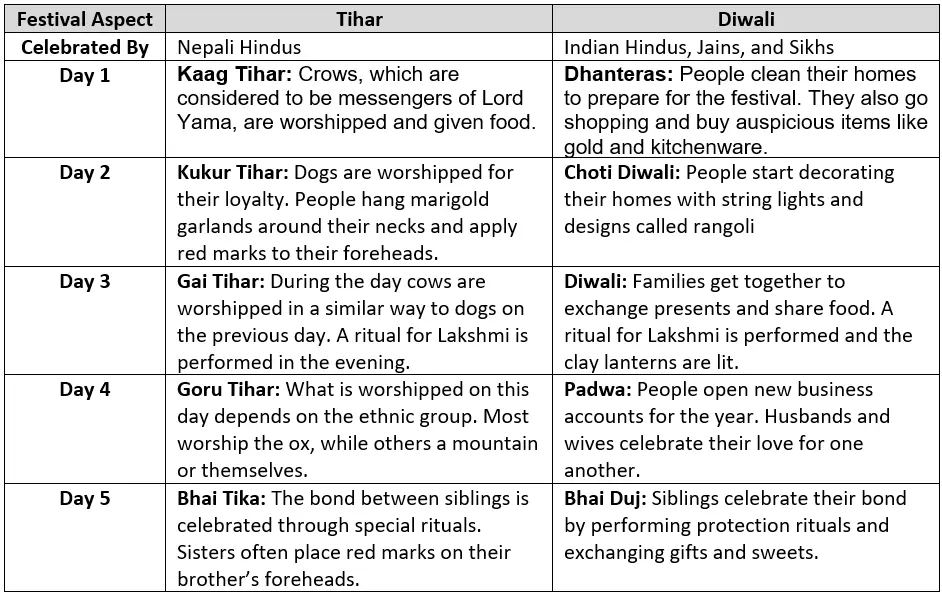
Summing Up!
The Tihar festival in Nepal comes to life with the warm flow of oil lamps and the dazzling twinkle of diyas. This is the festival of hope, unity, and the triumph of good over evil. The Tihar festival not only illuminates the darkest corners of our lives but also strengthens our bonds and connects us with our family members. So, let’s embrace the radiant spirit of Tihar and spread the warmth of joy and positivity.



